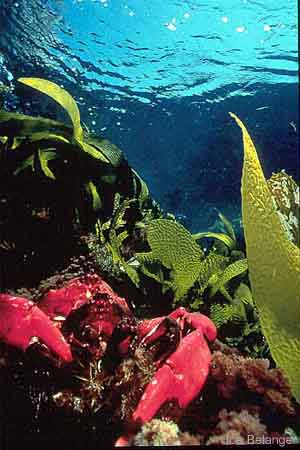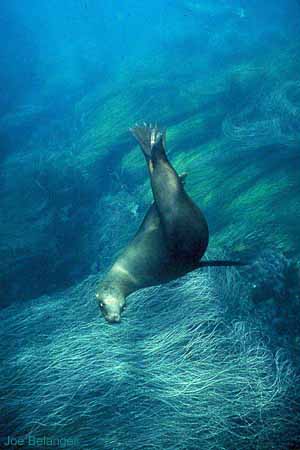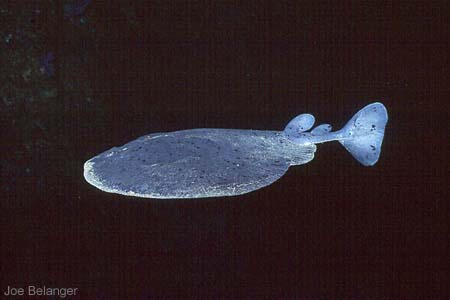|
| |

CW-010
|
| |
Mating Crabs
(Pugettia producta)
Photographed at Ship Rock, Catalina Island. I used a Nikonos V and a 15mm lens with a single Ikelite Substrobe 150 set at 1/2 power.About the Kelp Crab: Found mostly in kelp environments in shallow water, but can be found in up to 250 feet. During springtime, the lucky diver will happen upon two mating adults, as in this picture. This was shot in very shallow water, in about 3 feet, while I was sifting through palm kelp. The little crabs appeared in a passion for privacy, as the big red male protects the smaller purple crab and her brood of eggs from human intrusion. Their carapace (the shell portion without the legs) is about four inches in diameter. |











